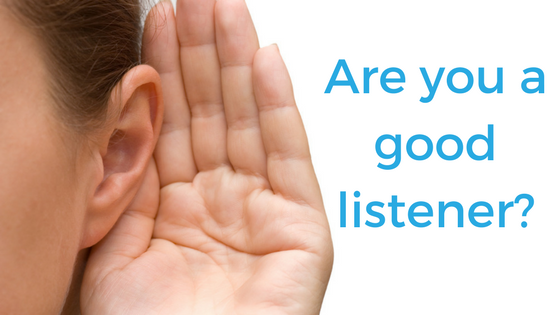-
Communication – the Art of Listening
 Do you have a friend who’s a good listener? Why do you feel that way about him or her? It’s probably because they listen to understand – not listen to respond. There’s a subtle difference and it’s a great skill to have.
Do you have a friend who’s a good listener? Why do you feel that way about him or her? It’s probably because they listen to understand – not listen to respond. There’s a subtle difference and it’s a great skill to have.Recently, I worked with a small board of directors at their annual retreat. The incoming president asked me to add some ‘communication’ activities throughout the agenda. When I asked her to define what she was looking for, she explained that she wanted activities around hearing what the other person is saying and making sure the point is getting across. My first thought was to do a simple game of “telephone” like we all played when we were younger – when one person whispers a sentence to their neighbor and you pass it on until the last person reveals what they heard. The results are usually quite different. I might still use that one when we meet again later this year, however I used two other exercises instead.
Silent listening
In this activity, the group paired up and took turns being the talker and listener. The ‘talkers’ each had an index card about a topic that they needed to speak about to their partner for 2-3 minutes. The ‘listener’ had to do that – listen. Not reply, not interject, just listen. At the end of the listening period, the listeners then had to summarize what they heard. Some of the listeners took notes, others relied on their memories. All found it challenging to not respond – but agreed that by listening and cueing in on body language and facial expressions, they were able to relate back not only what was said, but also how their partners felt about the topics.
I asked the group if they thought they would be able to summarize as well if, instead of facing each other during the exercise they were back to back. The consensus was that while they would lose the ability to cue in on the body language and facial expressions, they felt they would still be able to summarize the content if they added another element. That element was extra concentration. This is what happens on phone calls – we can hear what is being said, but need to concentrate harder and avoid distractions as we can’t see the person talking and pick up on other cues.
Better conversations
Too often we want to interject – respond, sympathize, disagree, affirm – when another is talking. By letting them finish their thoughts and confirming what was said before responding will result in a better conversation – allowing both parties to clarify content before moving forward.
This exercise reminds me of the saying “we have two ears and one mouth for a reason – so we can listen twice as much as we speak.”
Stay tuned for part two with the next exercise about following directions.
Carolyn works hard to be a good listener & communicator – traits that serve her well as a mom, a spouse, a meeting planner, and facilitator. How can she help your group?







